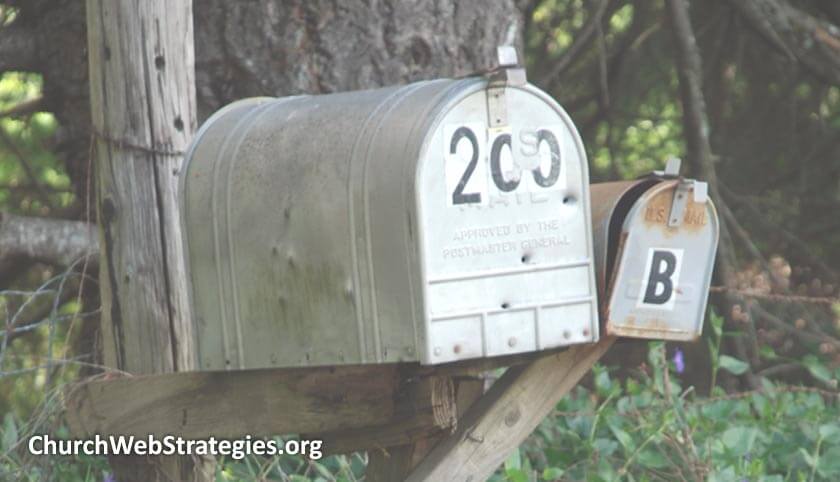Email is still a viable technology today, and this article will help you make the most of it. Email was first used in 1971, yet it is still one of the most effective methods to communicate with your audience. Social media is quickly becoming a pay to play market. Relying on visitors to regularly check your website is a joke. In fact, the only line of communication that gets a higher connection rate is SMS text messages. So let us dig into some ways to make your church email newsletter more effective.
According to Constant Contact, the open rate for emails from a religious organization is 25+%. Most other industries average around 10%. This means that your congregation is most likely going to open your emails. Yet if you continually bombard them with the information they do not want, their open rate will drop. Here are three rules to make your church email newsletter relevant and easy to maintain.
Relevance through Segmentation
The first rule is to give people only what they want. Use lists to segment your content. Many email services allow your registered users to select what lists they want to be on. This means you can send announcements about youth ministries only to those people interested in them. Your email readers do not have time to sift through pages of content. Give them only the headlines they want to read about. If you need a general announcement, many services allow you to blast your message across all your channels. Yet do this sparingly as you do not want to overwhelm your subscribers.
Recycle Content
The second rule is simple, make content once. Your pastor will create notes for their weekly teaching. Use those notes to create summaries for after the service. Then break apart that summary into several snippets to send to your congregation throughout the week. Using the segmentation rule from before, you can send weekly summaries to those that wish to read it. Yet those interested in everyday inspiration can subscribe to your daily list. Content that you share on social media should re-appear on your website and in your newsletters. No need to start over. Just copy, paste, and make minor formatting and contextual edits.
Automate When Possible
The last rule is to let computers do what they do best, automate tasks. I will use WordPress as an example. Every category and tag has its own RSS feed (a chronological listing of content). Tools such as MailChimp can check these feeds on a regular basis. If it detects new content, it drops it into pre-made templates and sends that out to your audience. You set up your lists and feeds one time, and let those tools work for you. Just publish a new post on your website and in a short period of time, it is sent to your subscribers. There are even tools that can publish that content to social media platforms as well. Yet that is outside the scope of this article.
Action Item
Talk with your ministries to determine what lists make sense for your church website newsletters. Work with your more technical volunteers to connect your RSS feeds to those lists. Then show content creators how to tag their content so it shows up in the proper channels. Lastly, tell your congregation about the new features they can enjoy. Let them select the ministries they wish to hear from, as well as the delivery schedule. Then enjoy a new level of engagement and excitement at your church!
Photo courtesy of Evelyn Hoff

